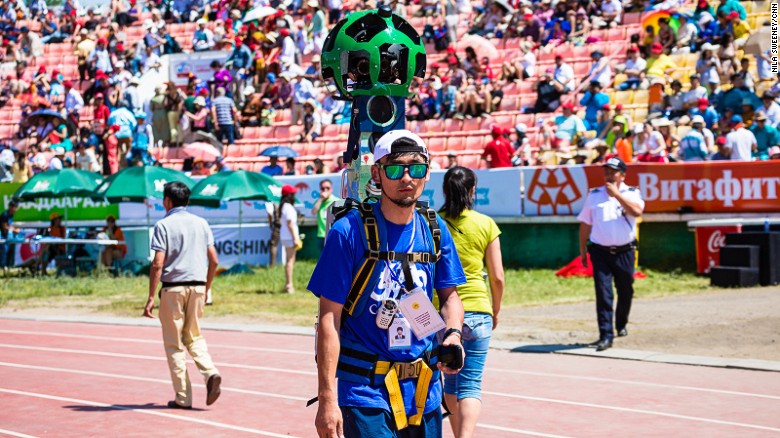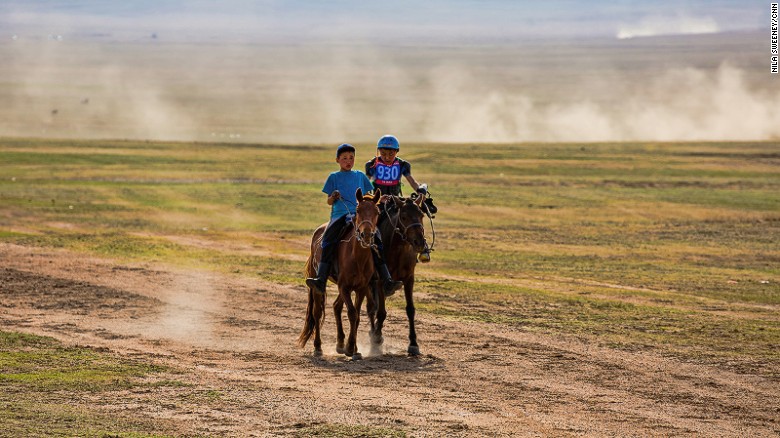By Nila Sweeney, for CNN |
After going underwater, climbing mountains and riding atop trains, Google Street View this month chalked up another achievement.
Its first festival.
Not just any festival, but Naadam — rugged Mongolia’s annual display of horsemanship, marksmanship and muscle.
And CNN got to tag along for the ride.
Held each summer in Ulaanbaatar (this year July 11-13), Naadam is also known as the Three Games of Men.
It features archery, wrestling and horse racing and was granted UNESCO Intangible World Heritage status in 2010.

Given its cultural significance to both Mongolians and the world, Naadam is a natural choice for the technology’s first festival effort, says Alex Starns, who heads Google’s Asia Pacific Street View Operation.
“I think Naadam is a perfect example of something that’s truly unique to Mongolia and it’s a showcase of Mongolian culture and heritage,” he says. “We use the Google Street View as a way for people around the world to understand that.”
Initial setbacks
Turns out it’s easier for a horse to get into the Naadam stadium than a Google Trekker operator.
Even with the right credentials, gaining entry to the opening ceremony wasn’t as straightforward as expected.
Guards at the gate initially refused operators entry, apparently unsure of what to make of the Google Trekker strapped on the operator’s back.
The Trekker is a contraption with a ball head that houses 15 cameras used to capture images at a rate of two frames per second.
After being shunted around and questioned a few times, the group was finally allowed in.
By this point, the crowd had already filled the 10,000-capacity stadium to the brim.
A few moments later, cultural performances began with a mesmerizing display of traditional costumes, dancing, throat singing and vigorous marching.
After the presidential speech, Google began shooting the festivities, walking around the field amid marching warriors and sword-wielding performers.
Dodging arrows and dust storms

Getting in the middle of the archery event was particularly thrilling.
Arrows were flying all over the place — anyone not paying attention could easily get hit.
At one point, I was walking in front of an archer without even noticing that I was directly in the firing line.
I was too busy trying to keep up with Google Trekker operator Azaa, who somehow managed to dodge every arrow without looking up.
This excitement paled in comparison with the horse racing event, held about 20 kilometers from the city.
The many spectators riding their horses to the event inevitably created a dust storm that blasted the area throughout the race.
As the jockeys, some as young as five, emerged from the cloud of dust to cross the finish line, the crowd erupted in applause.
According to local guide Timur Yadamsuren, Mongolian nomadic children learn how to ride a horse even before they can walk.
“By the time they turn four years old, they’re seasoned riders and by five, the boys are ready to compete,” he says. “But when they hit 13, they have to retire from racing.
“The smaller Mongolian horses can no longer take their weight.”














